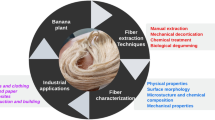Abstract
Antarctic krill (Euphausia superba) offers a high potential for development of innovative food products due to its large reserves and satisfied nutritional values. Defatted krill powder by-product generates from the process of krill oil, which is rich in various types of amino acids. This study aimed at recovering tyrosine from defatted krill by-product through enzymatic hydrolysis. Defatted krill by-product was hydrolyzed with three types of protease under optimum conditions with different incubation time. Free tyrosine dissociated from protein through hydrolysis by trypsin and was detected in the protein hydrolysates. Content of tyrosine increased with the increasing of incubation time till 5 h. Tyrosine extract contained 6.43 mg/kg fluorine and over 95 % of tyrosine, which demonstrated its high purity and safety. Tyrosine extract showed rod-shaped microstructure through scanning electron microscope analysis. Crystalline structure and thermal properties of tyrosine extract agreed well with those of l-tyrosine standard. During this process, both tyrosine of high purity and bioactive peptide products were obtained.






Similar content being viewed by others
References
Adelung, D., Buchholz, F., Culik, B., & Keck, A. (1987). Fluoride in tissues of krill Euphausia superba Dana and Meganyctiphanes norvegica M. Sars in relation to the moult cycle. Polar Biology, 7, 43–50.
Adler-Nissen, J. (1979). Determination of the degree of hydrolysis of food protein hydrolysates by trinitrobenzenesulfonic acid. Journal of Agricultural and Food Chemistry, 27, 1256–1262.
Anandan, P., Vetrivel, S., Jayavel, R., Vedhi, C., Ravi, G., & Bhagavannarayana, G. (2012). Crystal growth, structural and photoluminescence studies of L-tyrosine hydrobromide semi organic single crystal. Journal of Physics and Chemistry of Solids, 73, 1296–1301.
Atkinson, A., Siegel, V., Pakhomov, E. A., Jessopp, M. J., & Loeb, V. (2009). A re-appraisal of the total biomass and annual production of Antarctic krill. Deep-Sea Research, Part I, 56, 727–740.
Bourke, S. L., & Kohn, J. (2003). Polymers derived from the amino acid L-tyrosine: polycarbonates, polyarylates and copolymers with poly (ethylene glycol). Advanced Drug Delivery Reviews, 55, 447–466.
FDA (2004). Food and Drug Administration, Center for Food Safety and Applied Nutrition, Office of Food Additives Safety: Agency Response Letter: GRAS Notice No. GRN 000147, 26 August 2004
Gosset, G. (2009). Production of aromatic compounds in bacteria. Current Opinion in Biotechnology, 20, 651–658.
Grantham, G. J. (1977). The Southern Ocean: the utilization of krill. Rome: FAO.
Kecel, S., Ozel, A. E., Akyuz, S., Celik, S., & Agaeva, G. (2011). Conformational analysis and vibrational spectroscopic investigation of L-proline–tyrosine (L-Pro–Tyr) dipeptide. Journal of Molecular Structure, 993, 349–356.
Leuchtenberger, W., Huthmacher, K., & Drauz, K. (2005). Biotechnological production of amino acids and derivatives: current status and prospects. Applied Microbiology and Biotechnology, 69, 1–8.
Lütke-Eversloh, T., Santos, C. N., & Stephanopoulos, G. (2007). Perspectives of biotechnological production of L-tyrosine and its applications. Applied Microbiology and Biotechnology, 77, 751–762.
Mary, Y. S., Ushakumari, L., Harikumar, B., Varghese, H. T., & Panicker, C. Y. (2009). FT-IR, FT-Raman and SERS spectra of L-proline. Journal of the Iranian Chemical Society, 6, 138–144.
Ovissipour, M., Safari, R., Motamedzadegan, A., & Shabanpour, B. (2012). Chemical and biochemical hydrolysis of Persian sturgeon (Acipenser persicus) visceral protein. Food and Bioprocess Technology, 5, 460–465.
Pang, Z., Deeth, H., Sopade, P., Sharma, R., & Bansal, N. (2014). Rheology, texture and microstructure of gelatin gels with and without milk proteins. Food Hydrocolloids, 35, 484–493.
Para, G., Lucciardi, P., & Baratti, J. (1985). Synthesis of L-tyrosine by immobilized Escherichia intermedia cells. Applied Microbiology and Biotechnology, 21, 273–279.
Ramaekers, R., Pajak, J., Rospenk, M., & Maes, G. (2005). Matrix-isolation FT-IR spectroscopic study and theoretical calculations of the vibrational and conformational properties of tyrosine. Spectrochimica Acta, Part A, 61, 1347–1356.
Sariaslani, F. S. (2007). Development of a combined biological and chemical process for production of industrial aromatics from renewable resources. Annual Review of Microbiology, 61, 51–69.
Socretes, G. (1980). Infrared and Raman characteristic group frequencies: tables and charts (3rd ed.). Chichester: Wiley.
Solis, A., Lara, M., Rendon, L. (2007). Photoelectrochemical properties of melanin. Nature Precedings: hdl:10101/npre. 2007.1312.1: Posted 12 November 2007
Thenmozhi, M., Suguna, K., & Sekar, C. (2011). Influence of sodium fluoride (NaF) on the crystallization and spectral properties of L-tyrosine. Spectrochimica Acta Part A, 84, 37–42.
Tillander, V., Bjørndal, B., Burri, L., Bohov, P., Skorve, J., Berge, R. K., et al. (2014). Fish oil and krill oil supplementations differentially regulate lipid catabolic and synthetic pathways in mice. Nutrition and Metabolism, 11, 20–36.
Acknowledgments
This work was supported by the National Natural Science Foundation of China (nos. 31330060 and U1406402) and National High Technology Research, Development Program of China (863 Program) (no. 2011AA090801).
Author information
Authors and Affiliations
Corresponding author
Rights and permissions
About this article
Cite this article
Wang, Y., Chang, Y., Yin, L. et al. A Novel Technological Process of Extracting l-Tyrosine with Low Fluorine Content from Defatted Antarctic Krill (Euphausia superba) By-product by Enzymatic Hydrolysis. Food Bioprocess Technol 9, 621–627 (2016). https://doi.org/10.1007/s11947-015-1658-x
Received:
Accepted:
Published:
Issue Date:
DOI: https://doi.org/10.1007/s11947-015-1658-x




